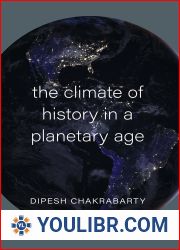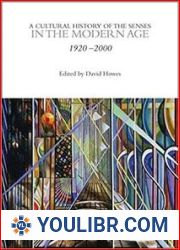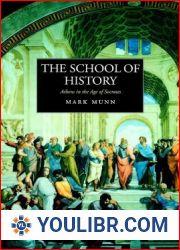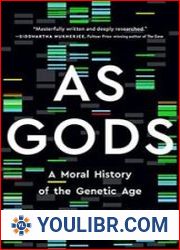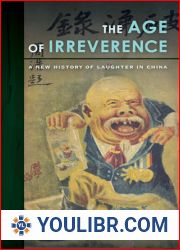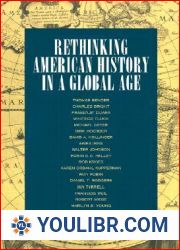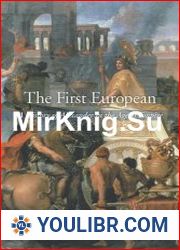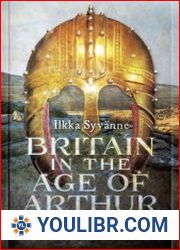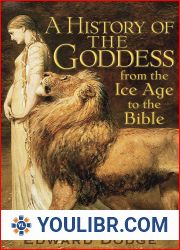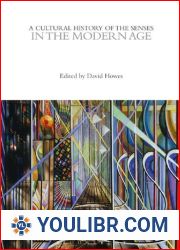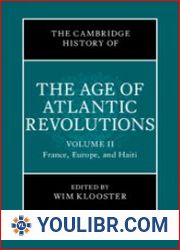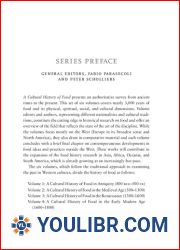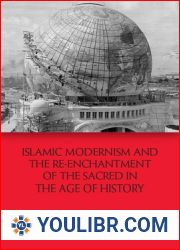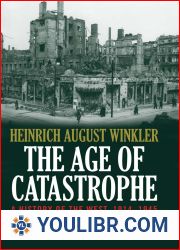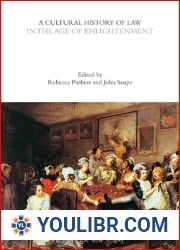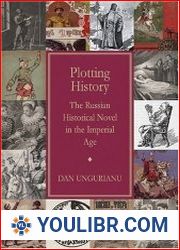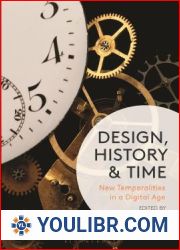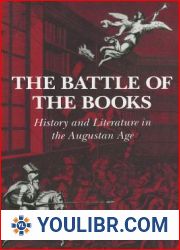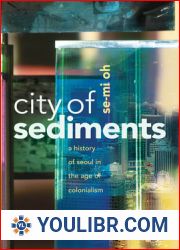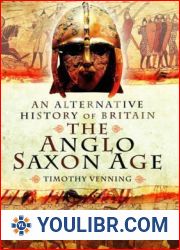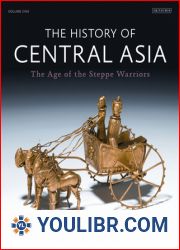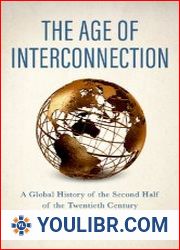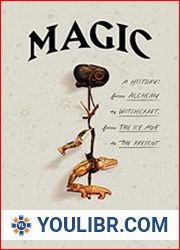
BOOKS - The Bronze Age: A History from Beginning to End

The Bronze Age: A History from Beginning to End
Author: Hourly History
Year: June 9, 2024
Format: PDF
File size: PDF 2.5 MB
Language: English

Year: June 9, 2024
Format: PDF
File size: PDF 2.5 MB
Language: English

The Bronze Age: A History from Beginning to End The Bronze Age, spanning approximately from 3300 to 1200 BCE, was a pivotal period in human history that witnessed the development of large-scale metalworking, the rise of cities, the invention of writing, and the emergence of kings and hierarchical societies. This era saw the transformation of hunting and gathering into agriculture, the wheel's invention, and the birth of natural sciences like astronomy. The period's defining features were international trade, the first empires, and the dawn of modern knowledge. Despite extensive research, many aspects of the Bronze Age remain shrouded in mystery, offering a wealth of opportunities for further exploration and discovery. The Fertile Crescent: Cradle of Civilization The Bronze Age began in the Fertile Crescent, a region encompassing Mesopotamia (modern-day Iraq), Egypt, and the Indus Valley (present-day Pakistan and India). Here, people first cultivated crops, domesticated animals, and developed writing systems. The Sumerians, one of the earliest civilizations, established cities like Ur and Uruk, which became centers of commerce, governance, and learning.
The Bronze Age: A History from Beginning to End Бронзовый век, охватывающий приблизительно с 3300 по 1200 год до нашей эры, был ключевым периодом в истории человечества, который стал свидетелем развития крупномасштабной металлообработки, подъема городов, изобретения письменности и появления королей и иерархических обществ. В эту эпоху произошло превращение охоты и собирательства в сельское хозяйство, изобретение колеса и рождение естественных наук, таких как астрономия. Определяющими чертами этого периода были международная торговля, первые империи и начало современных знаний. Несмотря на обширные исследования, многие аспекты бронзового века остаются окутанными тайной, предлагая множество возможностей для дальнейшего исследования и открытия. Бронзовый век начался в Плодородном полумесяце, регионе, охватывающем Месопотамию (современный Ирак), Египет и долину Инда (современные Пакистан и Индия). Здесь люди впервые культивировали зерновые культуры, одомашнивали животных, разработали системы письма. Шумеры, одна из первых цивилизаций, основали такие города, как Ур и Урук, которые стали центрами торговли, управления и обучения.
The Bronze Age : A History from Beginning to End L'âge du bronze, qui couvre environ 3300 à 1200 av. J.-C., a été une période clé de l'histoire de l'humanité, qui a été témoin du développement de la métallurgie à grande échelle, de l'élévation des villes, de l'invention de l'écriture et de l'émergence des rois et des sociétés hiérarchiques. À cette époque, la chasse et la cueillette ont été transformées en agriculture, l'invention de la roue et la naissance des sciences naturelles telles que l'astronomie. s caractéristiques de cette période étaient le commerce international, les premiers empires et le début du savoir moderne. Malgré des recherches approfondies, de nombreux aspects de l'âge du bronze restent enveloppés de mystère, offrant de nombreuses possibilités d'exploration et de découverte. L'âge du bronze a commencé dans le Croissant fertile, une région qui couvre la Mésopotamie (l'Irak moderne), l'Egypte et la vallée de l'Indus (le Pakistan et l'Inde modernes). C'est la première fois que les gens cultivent des céréales, domestiquent des animaux, développent des systèmes d'écriture. Sumer, l'une des premières civilisations, a fondé des villes comme Ur et Uruk, qui sont devenues des centres de commerce, de gestion et d'apprentissage.
The Bronze Age: A History from Beginning to End La Edad del Bronce, que abarca aproximadamente de 3300 a 1200 a. C., fue un período clave en la historia de la humanidad que fue testigo del desarrollo de la metalurgia a gran escala, el auge de las ciudades, la invención de la escritura y la aparición de reyes y sociedades jerárquicas. En esta época se produjo la transformación de la caza y la recolección en agricultura, la invención de la rueda y el nacimiento de las ciencias naturales como la astronomía. rasgos determinantes de este período fueron el comercio internacional, los primeros imperios y el comienzo del conocimiento moderno. A pesar de la extensa investigación, muchos aspectos de la Edad del Bronce siguen envueltos en el misterio, ofreciendo muchas oportunidades para una mayor investigación y descubrimiento. La Edad del Bronce comenzó en la Media Luna Fértil, una región que abarca Mesopotamia (actual Irak), Egipto y el valle del Inda (actual Pakistán e India). Aquí la gente cultivó primero cereales, domesticó animales, desarrolló sistemas de escritura. sumerios, una de las primeras civilizaciones, fundaron ciudades como Ur y Uruk, que se convirtieron en centros de comercio, administración y aprendizaje.
The Bronze Age: A History from Beginning to End A Idade do Bronze, que abrange cerca de 3300 a 1200 antes de Cristo, foi um período crucial na história da humanidade, que testemunhou o desenvolvimento da produção metálica em grande escala, a ascensão urbana, a invenção da escrita e o surgimento de reis e sociedades hierárquicas. Esta era transformou a caça e a coleta em agricultura, a invenção da roda e o nascimento de ciências naturais, como a astronomia. As características deste período foram o comércio internacional, os primeiros impérios e o início do conhecimento moderno. Apesar dos vastos estudos, muitos aspectos da Idade do Bronze permanecem encobertos por mistério, oferecendo muitas oportunidades de investigação e descoberta. A Idade do Bronze começou no Crescente Fértil, uma região que abrange a Mesopotâmia (o Iraque moderno), o Egito e o Vale do Inda (o Paquistão e a Índia modernos). É a primeira vez que as pessoas cultivam cereais, domesticam animais e desenvolvem sistemas de escrita. Os Sumers, uma das primeiras civilizações, fundaram cidades como Ur e Uruk, que se tornaram centros de comércio, administração e aprendizagem.
The Bronze Age: A History from Beginning to End L'età del bronzo, che si estende intorno al 3.300-1200 a.C., è stato un periodo chiave nella storia dell'umanità, che ha assistito allo sviluppo di una produzione metallica su larga scala, all'ascesa urbana, all'invenzione della scrittura e alla nascita di re e società gerarchiche. In questa epoca si è trasformata la caccia e la raccolta in agricoltura, l'invenzione della ruota e la nascita di scienze naturali come l'astronomia. I tratti determinanti di questo periodo sono stati il commercio internazionale, i primi imperi e l'inizio della conoscenza moderna. Nonostante la ricerca approfondita, molti aspetti dell'età del bronzo restano avvolti nel mistero, offrendo molte opportunità di ricerca e scoperta. L'età del bronzo è iniziata nella Luna Fertile, una regione che copre la Mesopotamia (Iraq moderno), l'Egitto e la Valle Inda (Pakistan e India moderne). È la prima volta che le persone coltivano cereali, domesticano animali, sviluppano sistemi di scrittura. I Sumers, una delle prime civiltà, fondarono città come Ur e Uruk, che divennero centri di commercio, gestione e formazione.
The Bronze Age: A History from Beginning to End Die Bronzezeit, die sich von etwa 3300 bis 1200 v. Chr. erstreckte, war eine Schlüsselperiode in der Geschichte der Menschheit, die die Entwicklung der Großmetallverarbeitung, den Aufstieg der Städte, die Erfindung der Schrift und die Entstehung von Königen und hierarchischen Gesellschaften erlebte. In dieser Epoche vollzog sich die Verwandlung von Jagd und Sammeln in Landwirtschaft, die Erfindung des Rades und die Geburt der Naturwissenschaften wie der Astronomie. Bestimmende Merkmale dieser Zeit waren der internationale Handel, die ersten Imperien und der Beginn des modernen Wissens. Trotz umfangreicher Forschung bleiben viele Aspekte der Bronzezeit geheimnisumwittert und bieten viele Möglichkeiten zur weiteren Erforschung und Entdeckung. Die Bronzezeit begann im Fruchtbaren Halbmond, einer Region, die Mesopotamien (den heutigen Irak), Ägypten und das Indus-Tal (das heutige Pakistan und Indien) umfasst. Hier kultivierten die Menschen zum ersten Mal Getreide, domestizierten Tiere und entwickelten Schriftsysteme. Die Sumerer, eine der ersten Zivilisationen, gründeten Städte wie Ur und Uruk, die zu Zentren des Handels, der Verwaltung und des rnens wurden.
Epoka brązu: Historia od początku do końca Epoka brązu, obejmująca około 3300 do 1200 pne, był kluczowym okresem w historii człowieka, który był świadkiem rozwoju wielkoskalowej obróbki metali, wzrost miast, wynalazek pisma, i pojawienie się królów i społeczeństwa hierarchiczne. W tej epoce nastąpiło przekształcenie polowań i zbierania się w rolnictwo, wynalezienie koła i narodziny nauk przyrodniczych, takich jak astronomia. Cechami definiującymi ten okres był handel międzynarodowy, pierwsze imperia i początek nowoczesnej wiedzy. Pomimo szeroko zakrojonych badań, wiele aspektów epoki brązu pozostaje okrytych tajemnicą, oferując wiele możliwości dalszej eksploracji i odkrycia. Epoka brązu rozpoczęła się w Żyznym Półksiężycu, regionie obejmującym Mezopotamię (współczesny Irak), Egipt i Dolinę Indusu (współczesny Pakistan i Indie). Tu po raz pierwszy ludzie uprawiali uprawy, udomowione zwierzęta i opracowywali systemy pisania. Sumerowie, jedna z pierwszych cywilizacji, założyli takie miasta jak Ur i Uruk, które stały się ośrodkami handlu, administracji i nauki.
תקופת הברונזה: היסטוריה מתחילתה ועד סופה של תקופת הברונזה, המשתרעת על 3300 עד 1200 לפנה "ס לערך, הייתה תקופה מרכזית בהיסטוריה האנושית שהייתה עדה להתפתחותן של מתכות בקנה מידה גדול, לעלייתן של ערים, להמצאת הכתב, ולהיווצרותן של מלכים וחברות היררכיות. עידן זה ראה את השינוי שחל בציד ובאיסוף חקלאות, את המצאת הגלגל ואת לידת מדעי הטבע כגון אסטרונומיה. המאפיינים המכריעים של תקופה זו היו הסחר הבינלאומי, האימפריות הראשונות ותחילת הידע המודרני. למרות מחקר מקיף, היבטים רבים של תקופת הברונזה נותרו אפופים במסתורין, ומציעים הזדמנויות רבות למחקר ולתגליות נוספות. תקופת הברונזה החלה בסהר הפורה, אזור הכולל את מסופוטמיה (עיראק המודרנית), מצרים ועמק האינדוס (פקיסטן המודרנית והודו). כאן, לראשונה, אנשים טיפחו יבולים, ביתו בעלי חיים ופיתחו מערכות כתיבה. השומרונים, אחת התרבויות הראשונות, ייסדו ערים כמו אור ואורוק, שהפכו למרכזי מסחר, מינהל ולמידה.''
Tunç Çağı: Baştan Sona Kadar Bir Tarih Yaklaşık MÖ 3300 ila 1200 yıllarını kapsayan Tunç Çağı, insanlık tarihinde büyük ölçekli metal işçiliğinin gelişimine, şehirlerin yükselişine, yazının icadına ve kralların ve hiyerarşik toplumların ortaya çıkmasına tanık olan önemli bir dönemdi. Bu dönem avcılık ve toplayıcılığın tarıma dönüşümünü, tekerleğin icadını ve astronomi gibi doğa bilimlerinin doğuşunu gördü. Bu dönemin belirleyici özellikleri uluslararası ticaret, ilk imparatorluklar ve modern bilginin başlangıcıydı. Kapsamlı araştırmalara rağmen, Bronz Çağı'nın birçok yönü gizemini koruyor ve daha fazla keşif ve keşif için birçok fırsat sunuyor. Tunç Çağı, Mezopotamya'yı (modern Irak), Mısır'ı ve İndus Vadisi'ni (modern Pakistan ve Hindistan) kapsayan Bereketli Hilal bölgesinde başladı. Burada insanlar ilk kez ekinler yetiştirdiler, hayvanları evcilleştirdiler ve yazı sistemleri geliştirdiler. İlk uygarlıklardan biri olan Sümerler, ticaret, yönetim ve öğrenim merkezleri haline gelen Ur ve Uruk gibi şehirler kurdular.
العصر البرونزي: تاريخ من البداية إلى النهاية، كان العصر البرونزي، الذي امتد ما يقرب من 3300 إلى 1200 قبل الميلاد، فترة رئيسية في تاريخ البشرية شهدت تطور الأعمال المعدنية على نطاق واسع، وصعود المدن، واختراع الكتابة، وظهور الملوك والمجتمعات الهرمية. شهدت هذه الحقبة تحول الصيد والتجمع إلى الزراعة، واختراع العجلة، وولادة العلوم الطبيعية مثل علم الفلك. كانت السمات المميزة لهذه الفترة هي التجارة الدولية، والإمبراطوريات الأولى، وبداية المعرفة الحديثة. على الرغم من الأبحاث المكثفة، لا تزال العديد من جوانب العصر البرونزي يكتنفها الغموض، مما يوفر العديد من الفرص لمزيد من الاستكشاف والاكتشاف. بدأ العصر البرونزي في الهلال الخصيب، وهي منطقة تشمل بلاد ما بين النهرين (العراق الحديث) ومصر ووادي السند (باكستان والهند الحديثة). هنا، ولأول مرة، قام الناس بزراعة المحاصيل، وتدجين الحيوانات، وتطوير أنظمة الكتابة. أسس السومريون، إحدى الحضارات الأولى، مدنًا مثل أور وأوروك، والتي أصبحت مراكز للتجارة والإدارة والتعلم.
청동기 시대: 기원전 약 3300 년에서 1200 년에 이르는 청동기 시대의 역사는 대규모 금속 가공의 발전, 도시의 부상, 글쓰기의 발명을 목격 한 인류 역사의 주요시기였습니다. 왕과 계층 사회의 출현. 이 시대에는 사냥과 모임이 농업으로 변모하고, 바퀴의 발명과 천문학과 같은 자연 과학의 탄생을 보았습니다. 이시기의 특징은 국제 무역, 최초의 제국, 현대 지식의 시작이었습니다. 광범위한 연구에도 불구하고, 청동기 시대의 많은 측면은 미스터리에 싸여 있으며, 더 많은 탐사와 발견을위한 많은 기회를 제공합니다. 청동기 시대는 메소포타미아 (현대 이라크), 이집트 및 인더스 밸리 (현대 파키스탄 및 인도) 를 포함하는 비옥 한 초승달에서 시작되었습니다. 여기에서 사람들은 처음으로 작물을 재배하고 길 들여진 동물을 길들이고 작문 시스템을 개발했습니다. 최초의 문명 중 하나 인 수메르 인들은 상업, 행정 및 학습의 중심지가 된 Ur 및 Uruk와 같은 도시를 설립했습니다.
青銅器時代の始まりから終わりまでの歴史紀元前3300から1200までの青銅器時代は、大規模な金属加工の発展、都市の台頭、執筆の発明、王と階層社会の出現を目撃した人類の歴史の中で重要な時期でした。この時代には、狩猟と農業への集まり、車輪の発明、天文学などの自然科学の誕生がありました。この時代の特徴は、国際貿易、最初の帝国、現代の知識の始まりであった。広範な研究にもかかわらず、青銅器時代の多くの側面は謎に包まれたままです。青銅器時代は、メソポタミア(現代のイラク)、エジプト、インダス渓谷(現代のパキスタンとインド)を含む肥沃なクレセントで始まった。ここで初めて農作物や家畜を栽培し、筆記システムを開発しました。シュメール人は最初の文明の一つであり、ウルやウルクなどの都市を設立し、商業、行政、学習の中心となった。
青銅時代:從開始到結束的青銅時代的歷史,大約在公元前3300至1200,是人類歷史上的關鍵時期,見證了大規模金屬加工的發展,城市的興起,寫作的發明以及國王和等級社會的出現。在這個時代,狩獵和采集轉變為農業,輪子的發明以及天文學等自然科學的誕生。這一時期的決定性特征是國際貿易、第一個帝國和現代知識的開始。盡管進行了廣泛的研究,但青銅時代的許多方面仍然籠罩在神秘之中,為進一步研究和發現提供了許多機會。青銅時代始於肥沃的新月,該地區包括美索不達米亞(現代伊拉克),埃及和印度河谷(現代巴基斯坦和印度)。在這裏,人們首先種植谷物作物,馴化動物,開發了書寫系統。蘇美爾人是最早的文明之一,建立了烏爾(Ur)和烏魯克(Uruk)等城市,這些城市已成為貿易,管理和學習的中心。







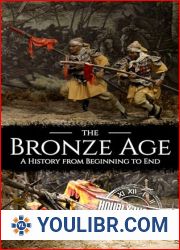
 49
49  3 TON
3 TON

